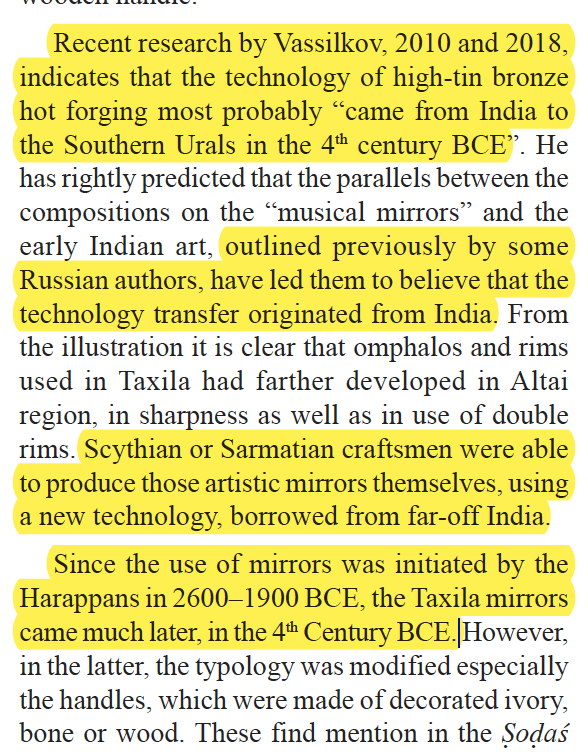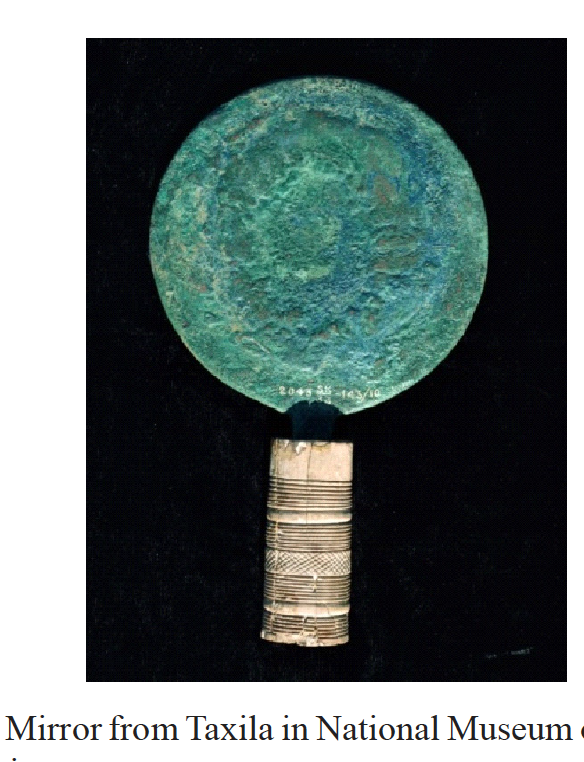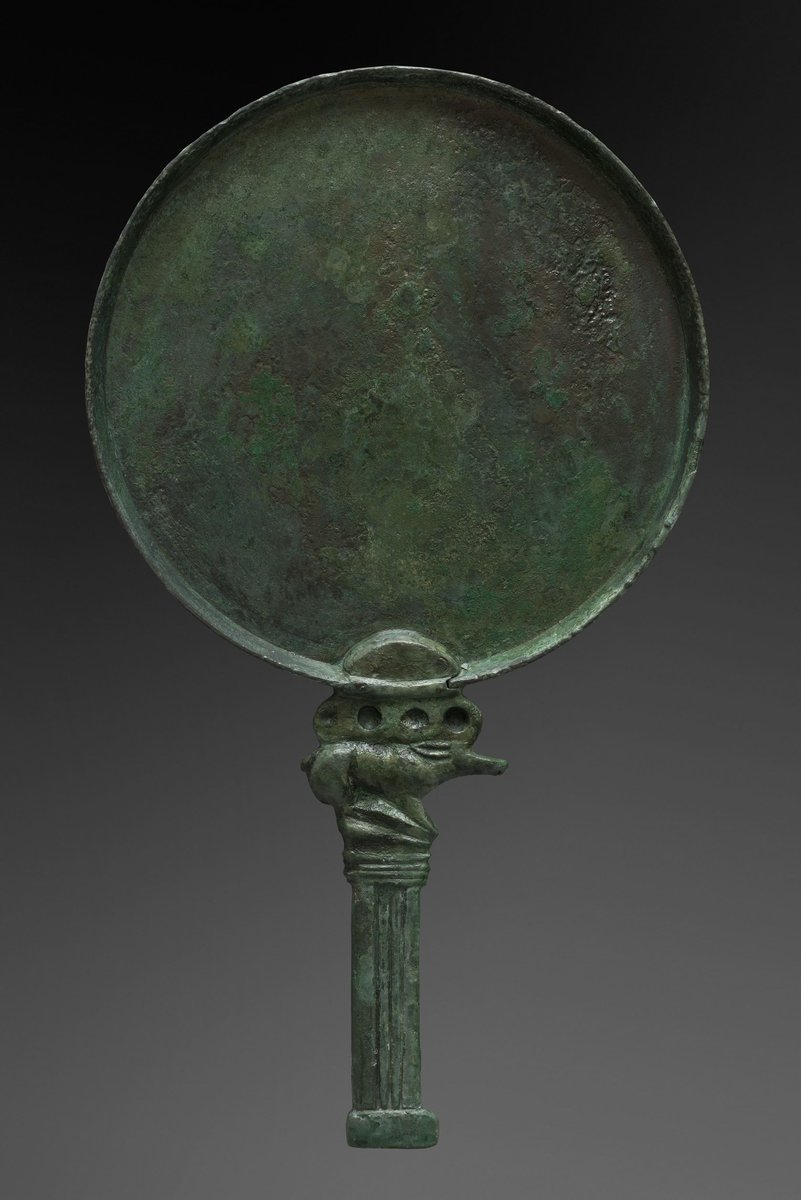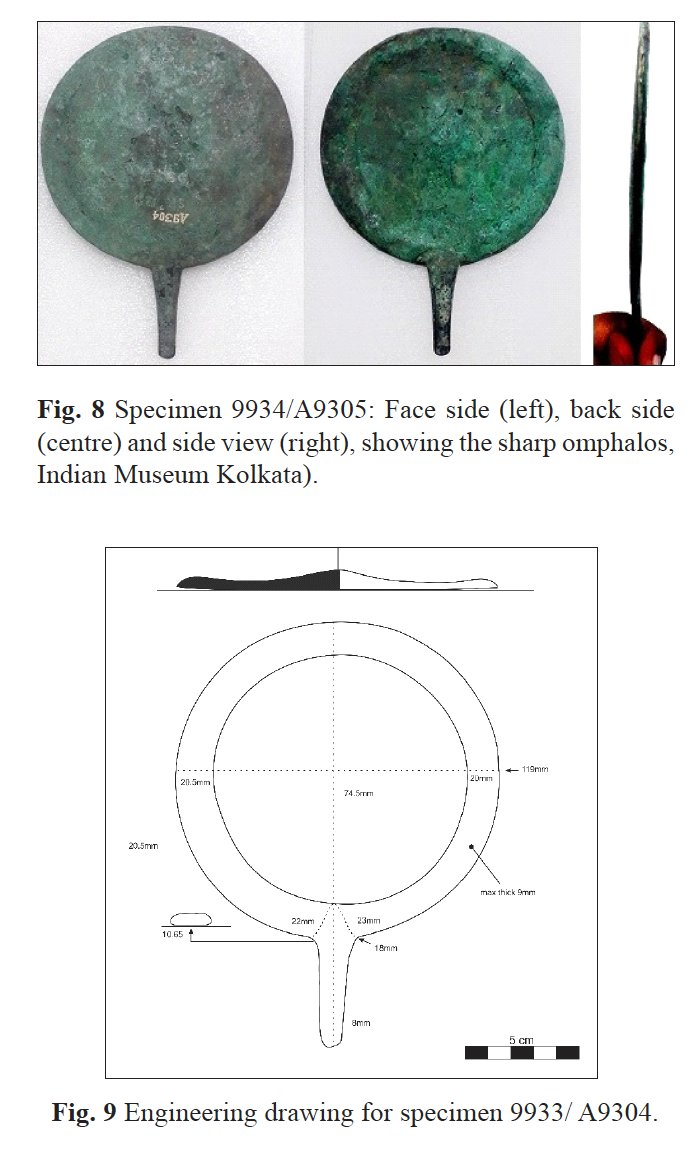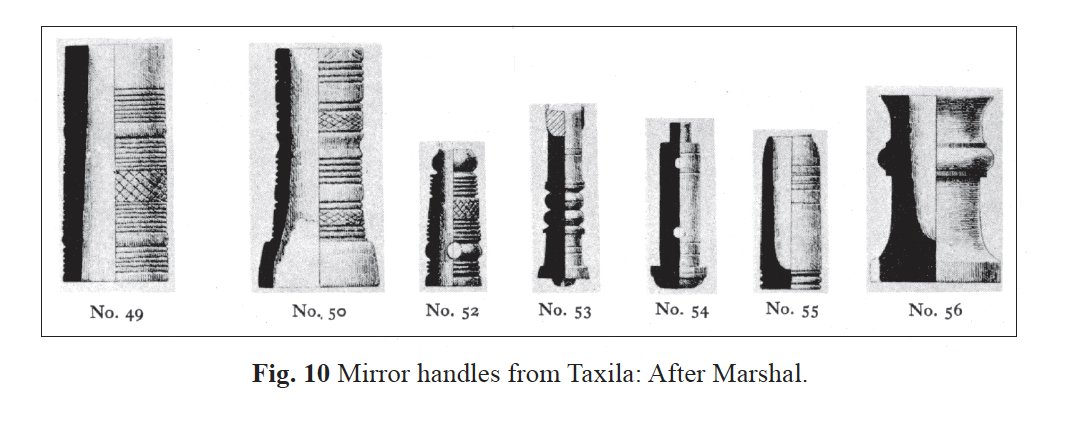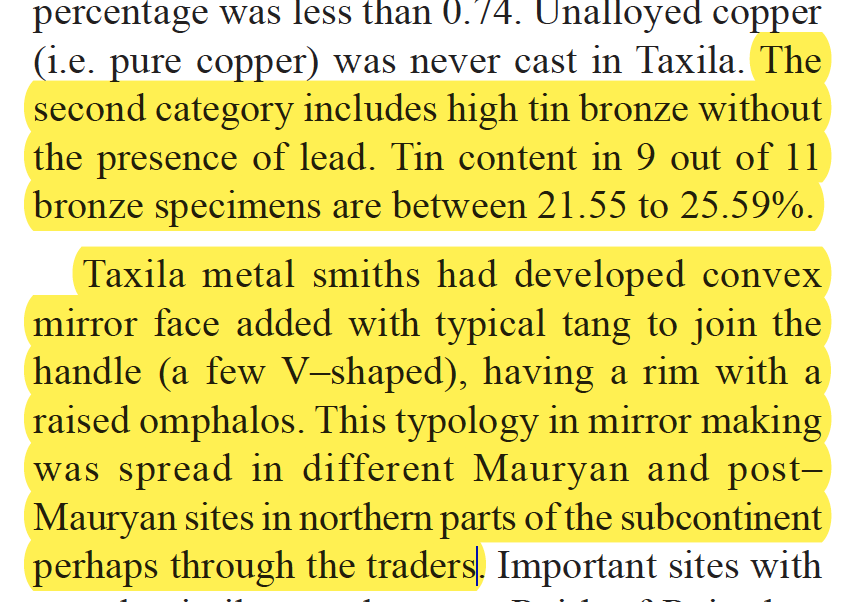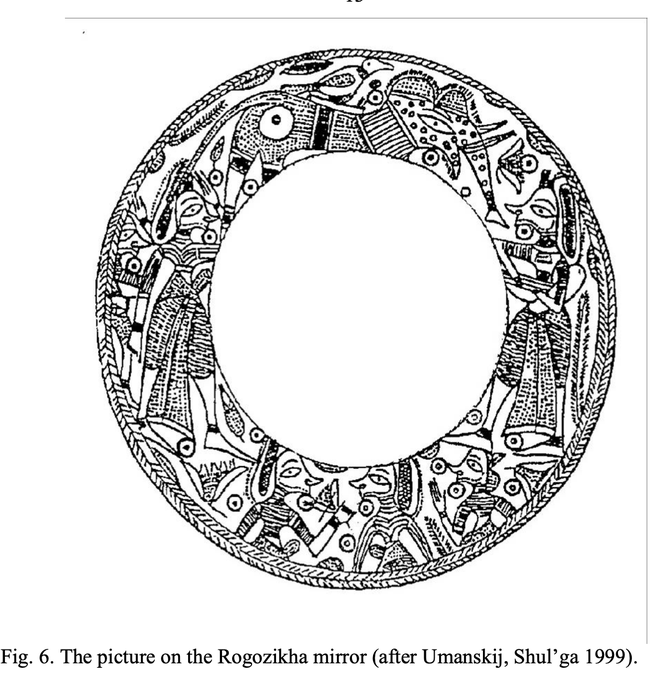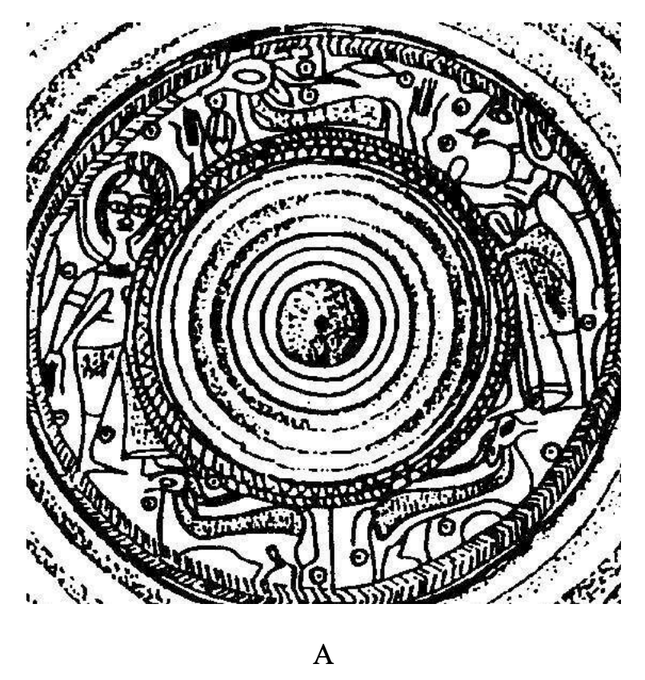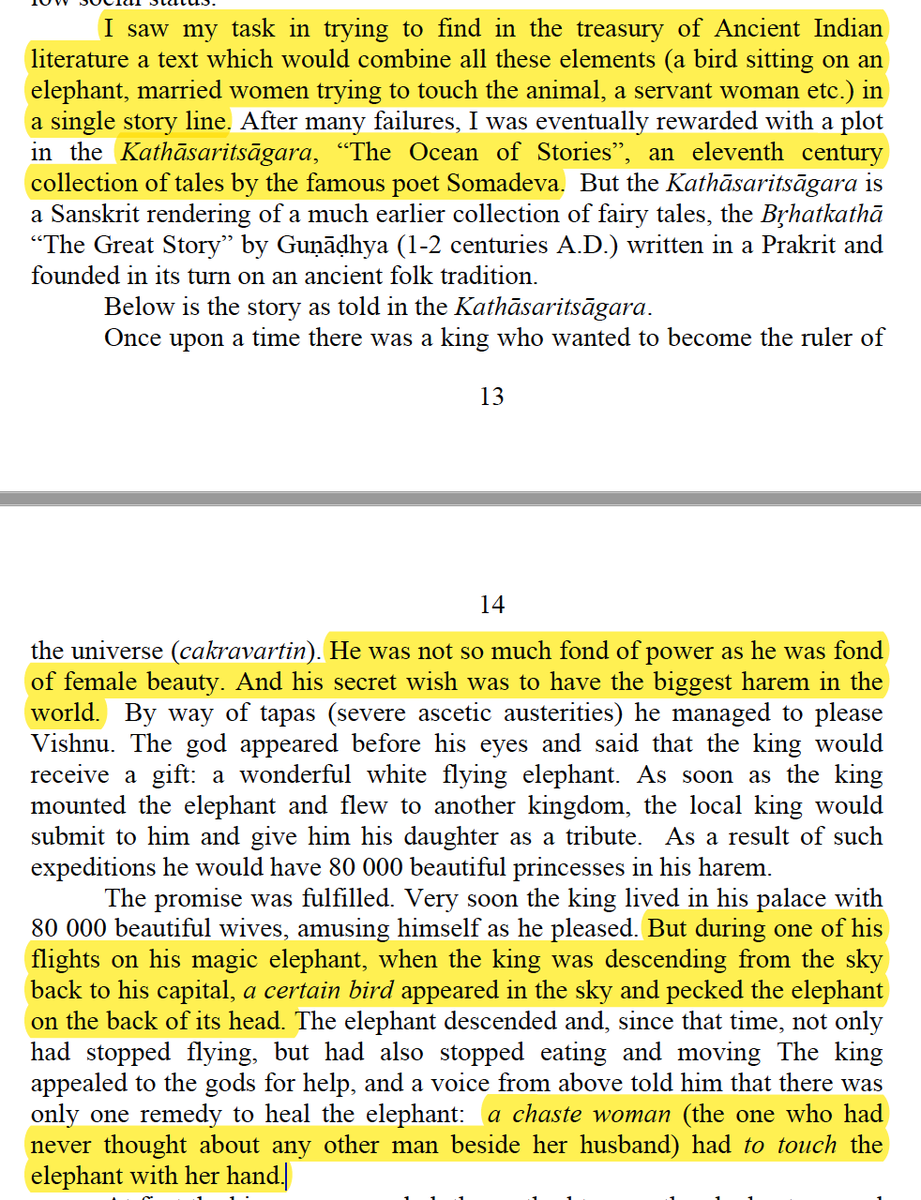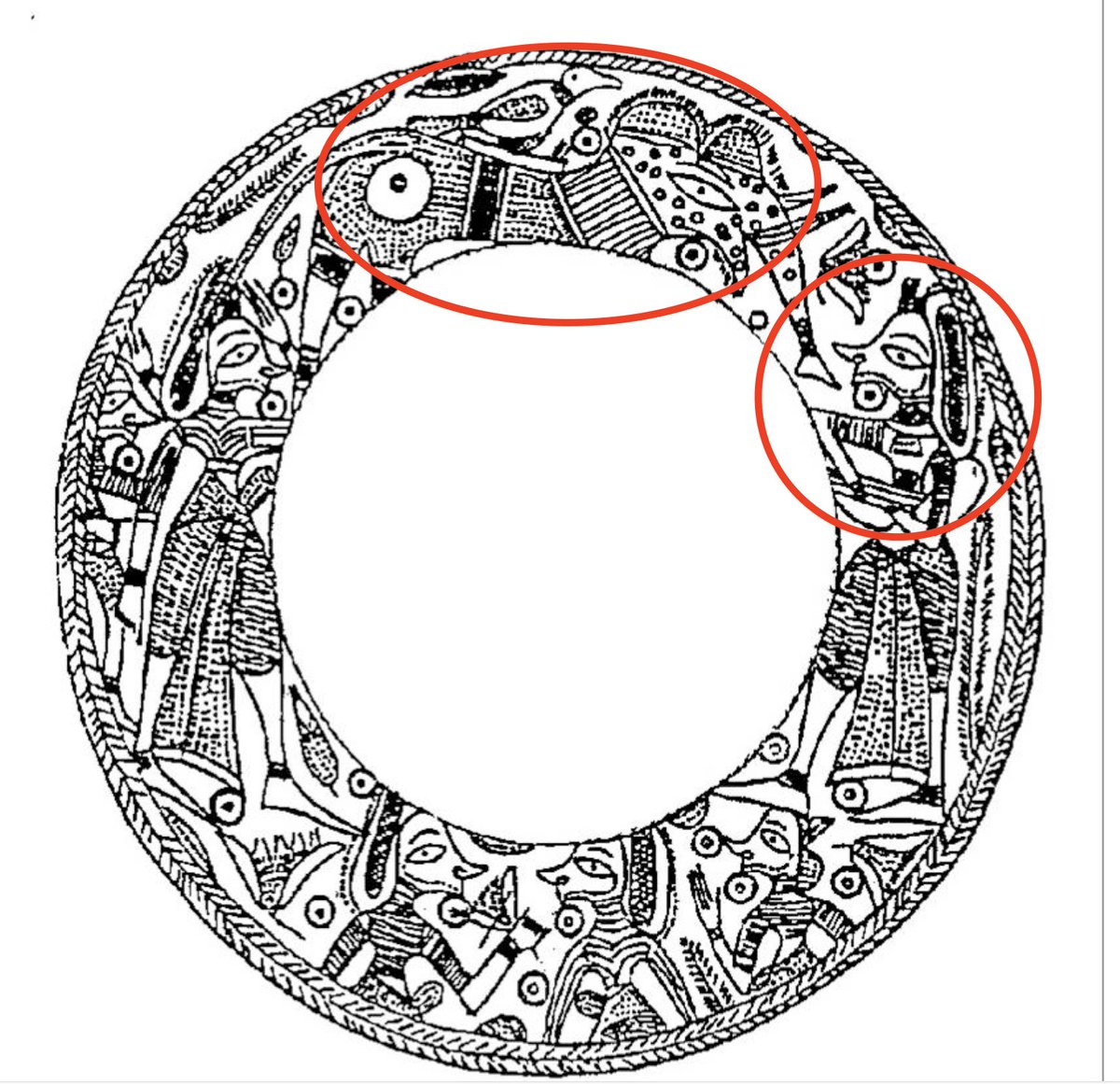The technology of high-tin bronze hot forging was transferred from India (where it was used for making mirrors) to the Southern Urals in the 4-5th century BCE.
The Scythian, Sarmatian craftsmen used it to make their own mirrors.
Pic 2 - Indian Mirror
Pic 3 - Scythian Mirror
The Scythian, Sarmatian craftsmen used it to make their own mirrors.
Pic 2 - Indian Mirror
Pic 3 - Scythian Mirror
Ancient Indians used these mirrors with ivory and bone handles. This technology was later spread across the Mauryan realm and post-Mauryan horizon. The color of the mirrors was pistachio green.
Upon discussion with @anilksuri it seems that the mirrors were actually made by Indian craftsmen for import. It is possible we had a colony of Indians living in the Urals supplying mirrors to Scytho-Sarmatians. (Like Crimean Greeks)
Some of the mirrors have Indian designs. See-
Some of the mirrors have Indian designs. See-
Further proof that Indian craftsmen made the mirrors used by the Scythians is that the high-tin content matches mirrors made in India. The Scythian mirrors had 6-8% tin.
One additional line of proof is that the Rogozikha mirror contains an elephant with a bird on top of it with some servant women touching an elephant. This story is exactly taken from the Kathāsaritsāgara & is of a servant girl Shīlavatī who touches an elephant.
One additional hint - Look at the elephant dot. On his tail. This dot is exactly found in some Jaina representations. I think we can be sure these mirrors were made by Indian craftsmen now. (as @anilksuri said, the technology would be a trade secret & not likely to be shared)

 Read on Twitter
Read on Twitter